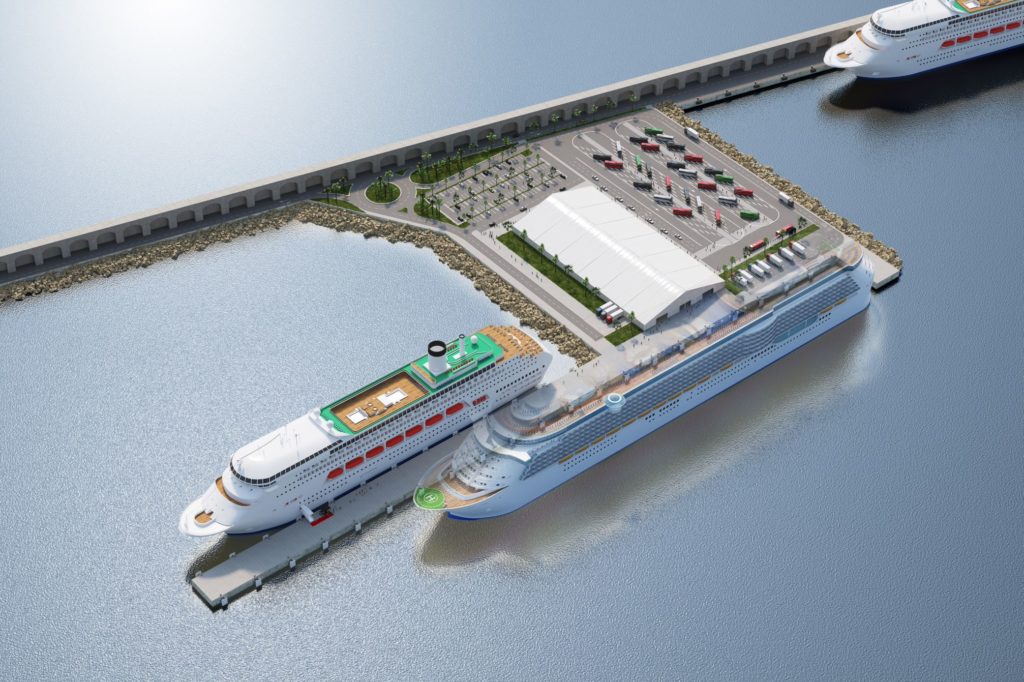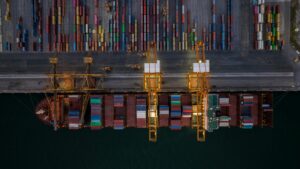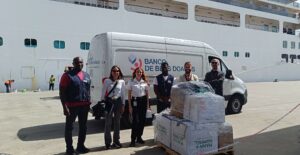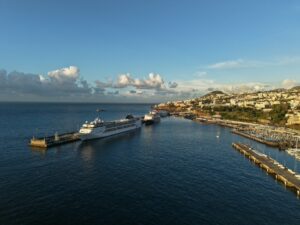This third construction phase is fundamental for laying the new wharf’s foundations
The Port of Tarragona is well into the third construction phase of the Balears Wharf with the laying of the foundation ballast and the levelling of the material deposited on the sea bed for future caisson placement.
The task of levelling the foundation ballast is key for the subsequent levelling of the seabed. The foundation ballast consists of placing the rockfill brought in from the Vallcarca quarry more uniformly with the assistance of the barge Ardenza. Subsequently, the levelling gravel will be laid. This consists of creating a bed of smaller stones to obtain a flat surface on which the concrete caissons can be placed in the subsequent phases.
Both tasks –foundation ballast and gravel levelling– are carried out by the Ardenza. This 52.48-m-long, 700-m3-capacity barge with its home port in Galicia is equipped with an excavator and is used as an auxiliary vessel for the more delicate work of completing the foundation ballast and laying the levelling gravel.
The work on laying the 1,232,000 tons of rockfill continues at a good pace. Once the levelling phase is completed, the next phase will be the placing of the caissons manufactured on the Mar del Aneto floating dock. This is a key process in the foundation laying for the new wharf.
Caisson manufacture about to start
The Mar del Aneto floating dock is tied up on the Catalunya Wharf and will begin the manufacture of the caissons in the next few weeks. These concrete foundations will be placed on the rockfill base once it has been levelled.
Eleven 41.05-m-long, 16.75-m-wide, 21.30-m-high caissons will be built. An empty caisson will weigh 7,288.80 tons, while it is calculated that the weight of a full one will be as much as 33,440.65 tons.
A new wharf full of opportunities
The new Balears Wharf will transform the face of the Port of Tarragona. This new infrastructure will substantially alter the area of the Llevant breakwater destined for the mooring of cruise liners, as it will be 460 metres long and have a surface area of 4 hectares.
The mooring line will have a total length of 700 metres, given that along 240 metres of its 460-metre length docking will be possible on both sides. This allows twice the number of vessels to tie up simultaneously, as well as being able to receive the world’s largest cruise liners.
In the future, it will also be possible to expand the new infrastructure to be used as solid bulk and multipurpose terminals.
Tarragona, 21 July 2020





